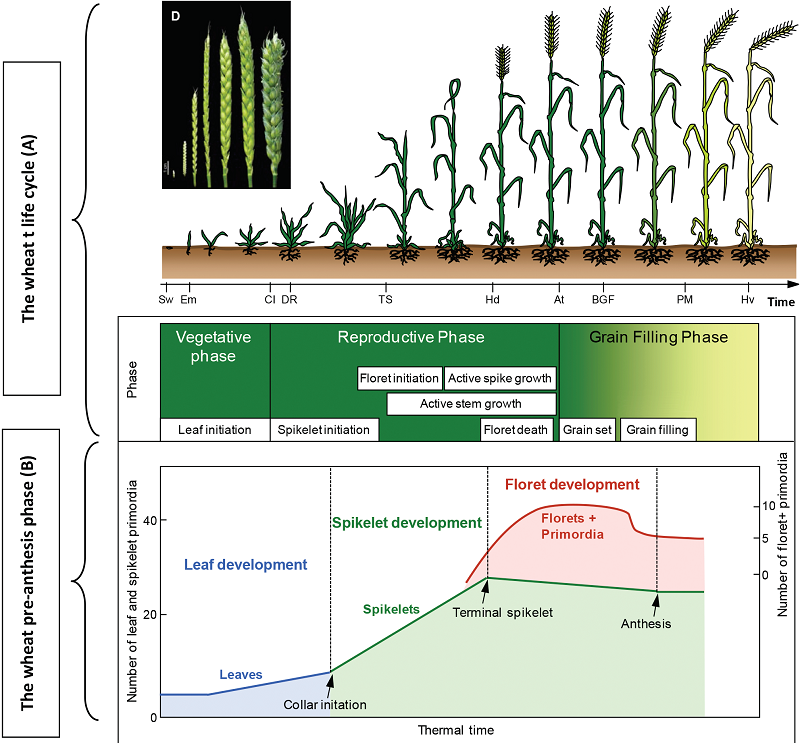Variance components, heritability and correlation analysis of anther and ovary size during the floral development of bread wheat.
Guo Z, Chen D, Schnurbusch T
J Exp Bot. 2015 Jun;66(11):3099-111. doi: 10.1093/jxb/erv117.
Anther and ovary development play an important role in grain setting, a crucial factor determining wheat (Triticum aestivum L.) yield. One aim of this study was to determine the heritability of anther and ovary size at different positions within a spikelet at seven floral developmental stages and conduct a variance components analysis. Relationships between anther and ovary size and other traits were also assessed. The thirty central European winter wheat genotypes used in this study were based on reduced height (Rht) and photoperiod sensitivity (Ppd) genes with variable genetic backgrounds. Identical experimental designs were conducted in a greenhouse and field simultaneously. Heritability of anther and ovary size indicated strong genetic control. Variance components analysis revealed that anther and ovary sizes of floret 3 (i.e. F3, the third floret from the spikelet base) and floret 4 (F4) were more sensitive to the environment compared with those in floret 1 (F1). Good correlations were found between spike dry weight and anther and ovary size in both greenhouse and field, suggesting that anther and ovary size are good predictors of each other, as well as spike dry weight in both conditions. Relationships between spike dry weight and anther and ovary size at F3/4 positions were stronger than at F1, suggesting that F3/4 anther and ovary size are better predictors of spike dry weight. Generally, ovary size showed a closer relationship with spike dry weight than anther size, suggesting that ovary size is a more reliable predictor of spike dry weight.
